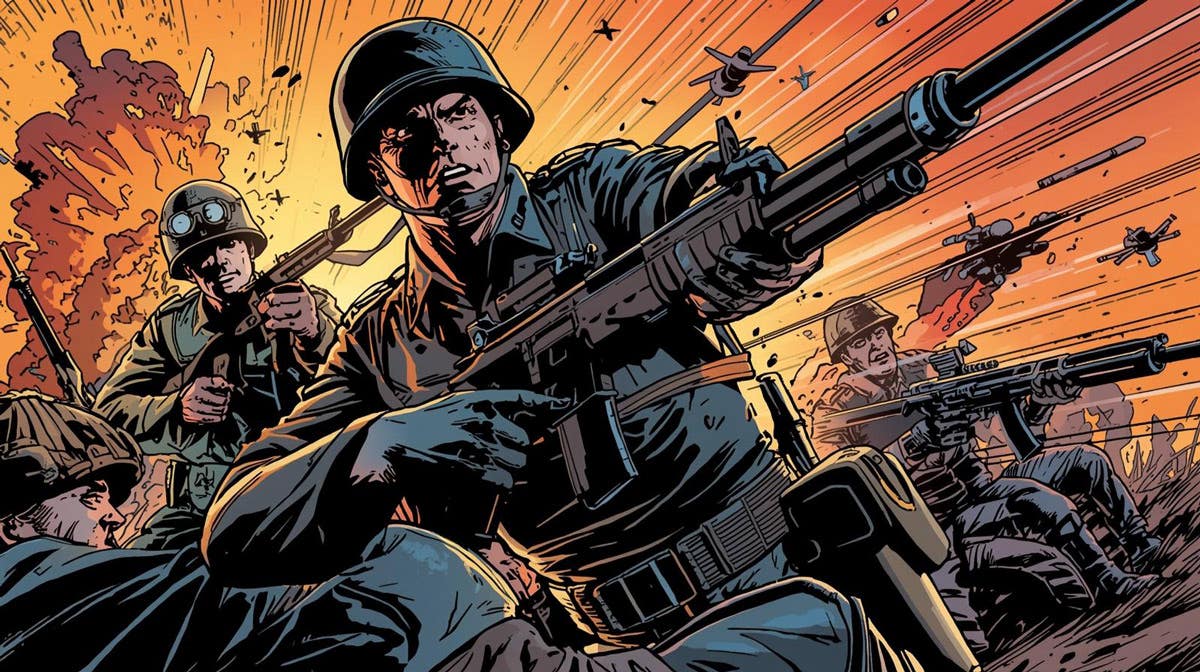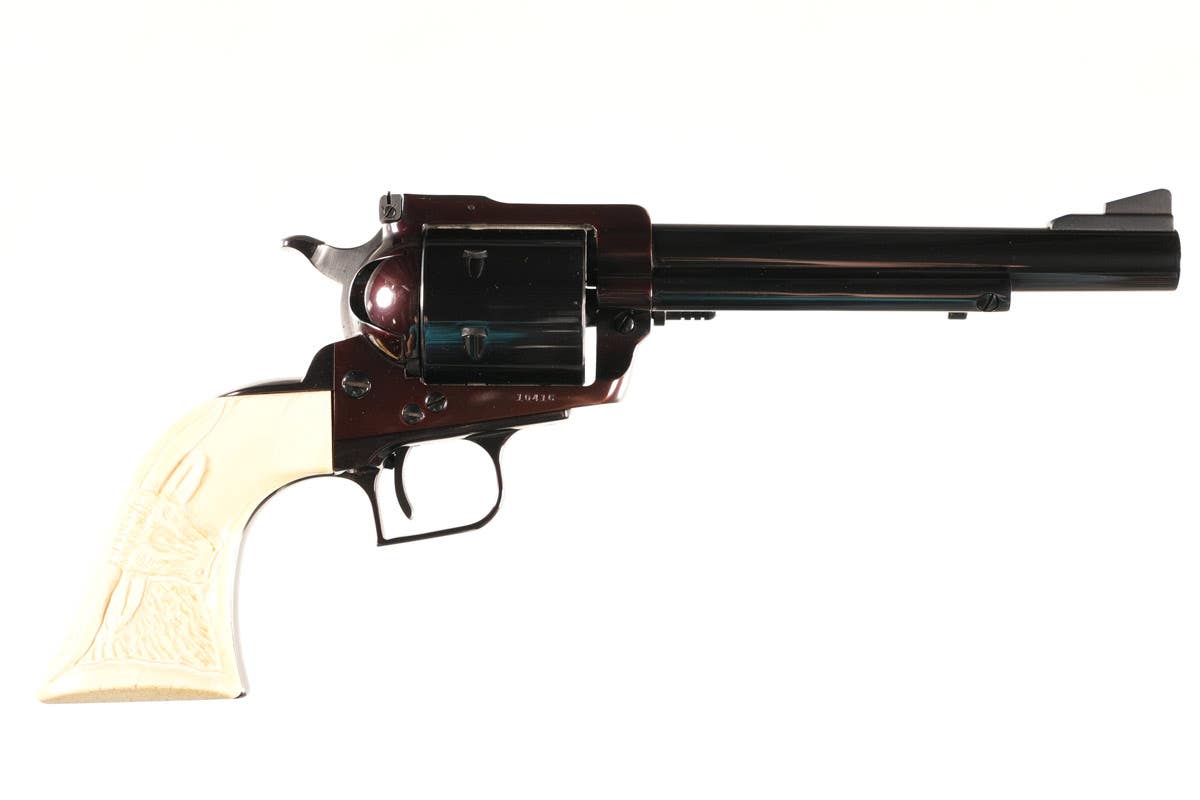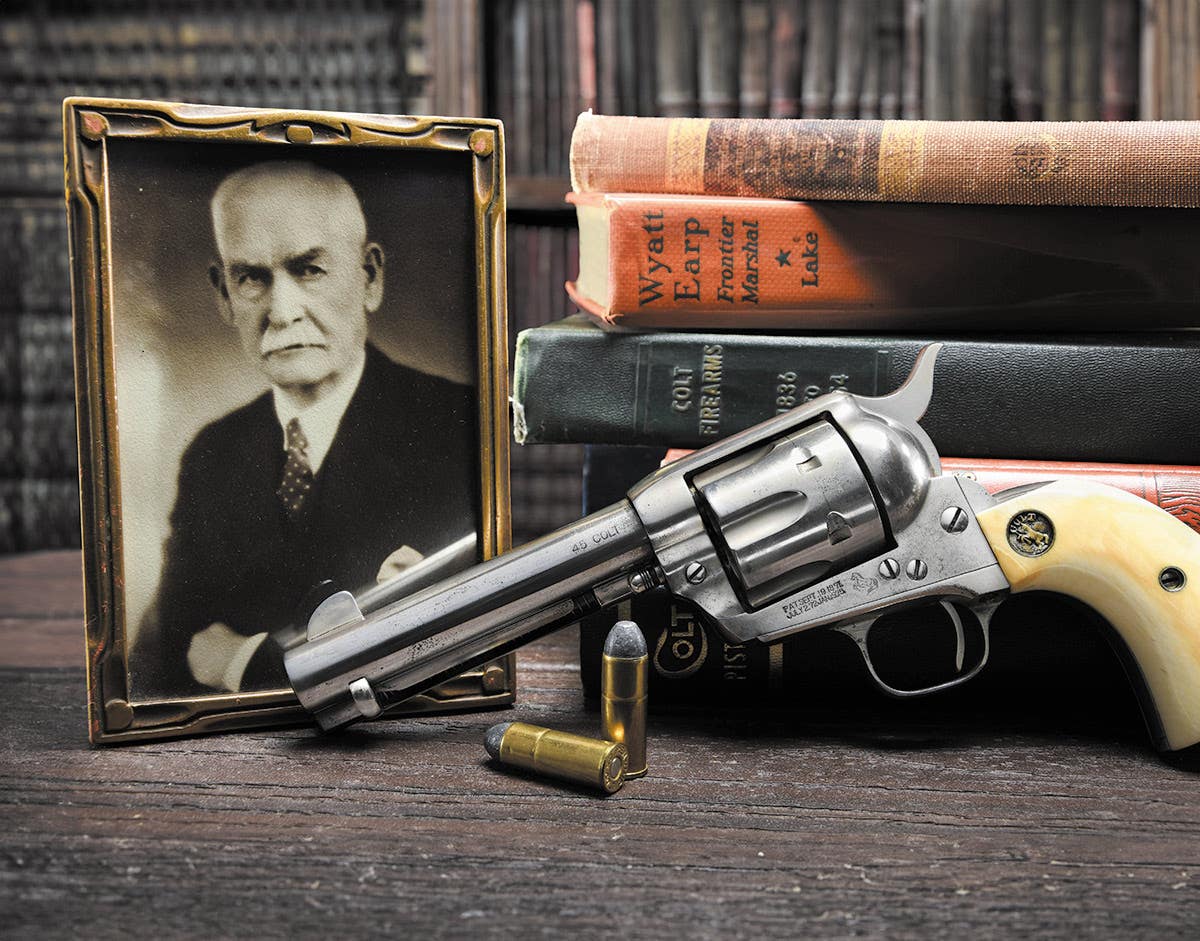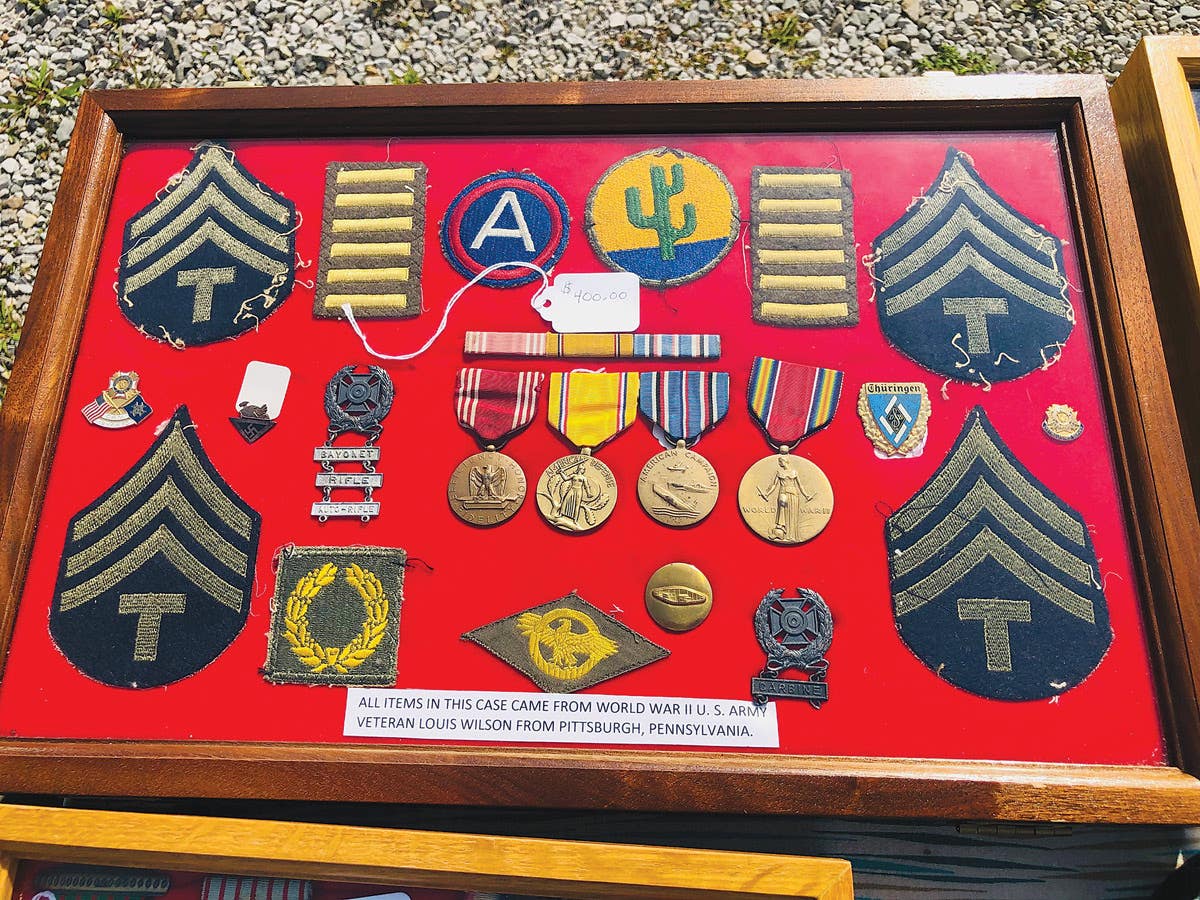5 Steps to Becoming a Serious Military Collector
Are you an accumulator or a collector? Maybe you are a militaria hoarder? Follow this process to turn your pile of military antiques relics into something meaningful and valuable.
I never really gave much thought to the question, “How does a person become a militaria collector?” Honestly, I always thought I was just born into the hobby.
Personally, my earliest childhood memories involve learning simple manual of arms evolutions while wearing the American Legion cap and Good Conduct Medal my Dad had given me. By kindergarten, the “John Graf Collection” already contained Civil War bullets, two tintypes of soldiers, WWII field gear and a vast array of plastic soldiers in addition to patches, medals and discarded uniform bits my Dad provided. I never really “began” collecting…the hobby just evolved as I became older.
I was fortunate to have a family, teachers and neighbors who encouraged my interest with various relics, books and conversations. Only now, many years later, have I realized that not everyone received that kind of early collector instinct nourishment.
WHAT DRIVES A PERSON TO COLLECT?
We all know we pursue the collecting hobby because of our overriding interest in military history. Holding and possessing three-dimensional objects provides a sense of connection that the written word can’t satisfy. But that isn’t the only motivator.
The early days of the hobby following WWII defined a system of evaluating basic pieces: Firearms, blades, medals and headgear. From this basic sense of “military relics have monetary value,” grew the drive to discover something for next to nothing. The “average” military collector has a lot in common with the treasure seeker.
The resulting “gold rush” atmosphere permeated the hobby for nearly 70 years before the veins of undiscovered, valuable relics were nearly all mined. Sure, people still hope to discover nuggets or maybe even a small strike of relics for next to nothing, but the Internet, television reality shows and basic understanding of values have eroded the likelihood. But, just as grizzled old gold miners talked about the “good old days” when they could just pick up the nuggets off the bare earth, the military hobby is full of folks yearning for the early days striking it rich.
Thankfully, our hobby is not solely driven by treasure seekers. Rather, we set ourselves apart from the “get rich quick” people through genuine interest in the history of military service and armed conflict.
HOW TO BECOME A SERIOUS COLLECTOR
So you want to collect military relics or vehicles? The lure of finding a jeep in a barn or a WWII German paratrooper helmet at a garage sale might be strong enough to drive some to spend hours and hours on the hunt, but is that the most efficient method of assembling a meaningful collection?
When we finally get past the “treasure seeker” urge and want to collect, there are a few basic steps that will help assemble meaningful, interpretive collections. To ignore these steps, however, is to ultimately risk a visit from the producers of A&E’s Hoarders.
STEP 1: Define your goal
A lot of people call themselves “collectors” when, in fact, they are simply accumulators within loose parameters—not that there is anything wrong with that (thank you, Seinfeld, for that very useful disclaimer!). Accumulators love to spend their time walking flea markets, garage sales, second hand stores, antique shops or gun shows looking for anything “military” that is cheap. You probably already know these folks (or have been one!)—their excitement is attained through the retelling of the discovery, always emphasizing how little they paid for the “rarity.”
But accumulating is not collecting—even though they share some similar traits. A collector defines a goal, thereby forcing themselves to make calculated decisions before acquiring items. Goals might include collecting certain time periods, units, types of equipment or simply obtaining investment-grade material. Whatever the goals, they force a person to making choices—the first step to becoming a collector.
Step 2: Research BEFORE you buy
This is, by far, the hardest step for a collector to realize. Many of our collections start by acquiring an object and then researching information that explains what we have found. Through that process, we discover nuances and variations that we convince ourselves we must also obtain. Before we know it, we have become a collector of a particular item—something we may not have actually set out to collect!
This has happened to me many times… an example would be when I ended up with a closet full of West German paratrooper uniforms. When I was in college, I had purchased a camouflaged jacket off the back of a fellow student, hoping that it was something “rare.” It turned out to be a 1950s Fallschirmjäger jacket. Instead of admitting the mistake and cutting my losses, I decided it would be cool to collect Bundeswehr paratrooper gear. Good grief! I liked WWII relics, and yet, I started buying Cold War era material. Talk about the tail wagging the dog!
Had I known what the man was wearing, I would have never made the purchase. But, my lack of knowledge and that drive to “get something rare for next to nothing (that gold miner instinct)” drove me down a path I never intended to travel.
“Research before you buy” is a hard rule for us to follow. The collector instinct tells us to snap up something because we won’t have the opportunity later. This probably goes back to our cave dwelling ancestors who gathered berries when they saw them because there was no guarantee the berries would still be there later. But, we aren’t talking about berries. Militaria, by its very nature, was mass produced. The chances that the relic in the wild is a “one of a kind” is rather remote. If there is one, there is probably another somewhere, should that first one be gone when you go back for it.
STEP 3: Stay focused
My Bundeswehr collection may have been an extreme example, but I think we all travel down collecting side streets more often than we care to admit. Just glancing around my office, I see a Riker mount full of Tank Corps collar discs. Now having more than one doesn’t make me any smarter about the American tank forces of WWI—my predefined collecting goal—but I have justified the small sub-collection by telling myself each disc represents a slight variation. Gathering the similar—but slightly different—discs satisfied my collecting urges but really didn’t move me ahead in my goal of interpreting the role of the Tank Corps in WWI.
The danger of collecting detours like my collar discs is in the distraction. If you are at a show looking at every button or lug nut, you might just miss your opportunity to buy that Dragoon officer’s tunic or unrestored GPW you really wanted.
Not only do they take the collector’s “eye off the ball,” they will deplete collecting resources. For example, if you spend hundreds of dollars, say, on Tank Corps collar discs, only to receive a call from a friend who is standing at a show, describing a killer Tank Corps uniform group that you cannot now afford, you are going to feel darn silly. (I am not saying that just happened in the past two weeks…it’s just an example of what could happen if you don’t stay focused. D’oh!)
STEP 4: Be patient
Let’s face it, collecting requires discipline. We may have followed the rules and decided we are going to collect x, y or z (number 1 from above, “Define your Goal”), we think we know everything there is to know about the enemy (having applied rule No. 2) and we aren’t easily distracted by other collectibles (no. 3), but if we aren’t patient, we will never really be satisfied with our collections.
Patience allows you to assemble the most important weapon in your collecting arsenal: The monetary war chest. If the collector in our Tank Corps collar disc example had exercised patience, he would have had the monetary war chest to purchase a group that would have been a very significant addition to his collection. But, the urge to collect had taken control. He spent his resources on trinkets rather than wait for an important piece.
Unless you are Bill Gates or Mark Zuckerberg, you are going to have to make choices in buying. The hardest choice is to walk away from something today in the hopes that a much more significant piece comes available tomorrow. This is where you have to be stronger than your collecting instinct.
Just like the general conducting a military campaign, we can’t fight every skirmish. If we do, when we finally confront the enemy, we won’t have the resources to prevail. Pick your skirmishes wisely. Make sure they point you to the greater goal of acquiring quality items.
STEP 5: Be engaged
The instinct that drives one to collect also drives him or her to be secretive and not too social. Think of those cave dwellers and the berries they picked. If they were overtly social, talking to everyone about their interest in berries, they might affect the supply in a couple of ways: Others might also become interested in berries, thereby competing for the supply. Or, perhaps even worse, someone might decide to capitalize on the cave man’s desire for berries by gathering the fruit—not for their own consumption—but rather, to sell to other cave men!
Keeping the knowledge of the berries to himself might have worked for the cave man, but today’s military collectors don’t enjoy this sort of solitude. The value of military memorabilia isn’t a secret anymore… the gold rush is over and the cat is outta the bag. Pawn Stars, Antiques Road Show, museums, other collectors, and yes, even Military Trader and Military Vehicles Magazine have educated the masses that there is “money in them thar OD thangs!”
So, being secretive and anti-social is no longer a viable weapon in the military collector’s arsenal. Actually, the opposite is true. The more you network, the better luck you are going to have in assembling a meaningful collection. Sure, it probably won’t be “cheap,” but it will have depth and meaning that will, ultimately translate into “valuable.” Networking with dealers and other collectors at shows, on Internet forums, through subscriptions and in clubs will lead you to higher quality relics and greater collecting satisfaction.
Following these five rules aren’t a guarantee that you will assemble a world-class collection, or even recoup an investment. But, if you do follow them, you will be sure to find a deeper satisfaction in your study of military history—after all, that is the number one goal of all of us in this hobby!
Focus on the quality, not the quantity,
John Adams-Graf
Editor, Military Trader and Military Vehicles Magazine
You may also like:
*As an Amazon Associate, Military Trader / Military Vehicles earns from qualifying purchases.
John Adams-Graf ("JAG" to most) is the editor of Military Trader and Military Vehicles Magazine. He has been a military collector for his entire life. The son of a WWII veteran, his writings carry many lessons from the Greatest Generation. JAG has authored several books, including multiple editions of Warman's WWII Collectibles, Civil War Collectibles, and the Standard Catalog of Civil War Firearms. He is a passionate shooter, wood-splitter, kayaker, and WWI AEF Tank Corps collector.








